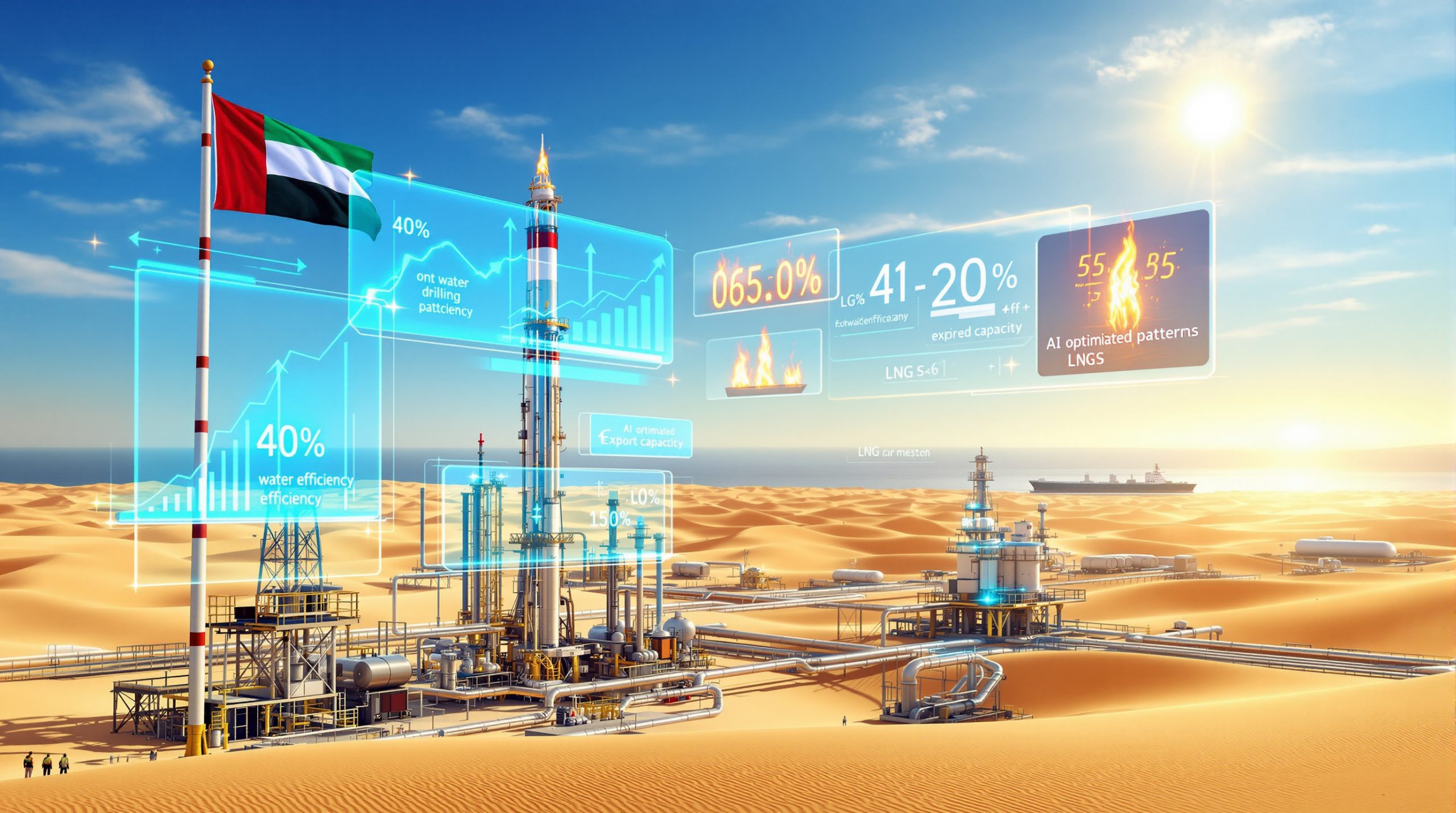Korea's Ambitious Energy Independence Gamble
South Korea faces an unprecedented energy security challenge that affects every aspect of its modern economy. As a nation importing approximately 95% of its energy requirements, the country remains vulnerable to global market volatility, geopolitical tensions, and supply chain disruptions that could cripple its industrial base overnight. Furthermore, recent oil production challenges worldwide have intensified concerns about long-term supply security.
The East Sea represents both opportunity and risk for Korean energy planners. Beneath these contested waters lie potential hydrocarbon reserves that could fundamentally alter the nation's strategic position in Northeast Asia. However, the technical challenges of deepwater exploration, combined with political uncertainty and environmental concerns, create a complex web of factors that determine whether energy independence remains an achievable goal or an expensive fantasy.
Recent developments in Korean offshore exploration demonstrate how quickly circumstances can shift from optimism to uncertainty. What began as a flagship national energy project has evolved into a cautionary tale about the realities of deepwater hydrocarbon development in politically volatile environments.
Understanding South Korea's Blue Whale Project Initiative
The South Korea Blue Whale project represents the nation's most ambitious offshore energy exploration venture, targeting substantial hydrocarbon deposits beneath the East Sea's deepwater formations. This comprehensive drilling program encompasses four distinct offshore exploration blocks, covering approximately 20,000 square kilometers of seabed territory located 270 kilometers southeast of the capital.
Initial geological assessments conducted through advanced seismic surveys indicated promising hydrocarbon potential, with estimates ranging from 3.5 to 14 billion barrels of oil and gas equivalent. These projections suggested sufficient reserves to satisfy South Korea's natural gas demand for three decades and oil requirements for four years, representing a transformative opportunity for energy independence.
The project's technical specifications highlight the complexity of the undertaking:
- Water depth: 1,300 meters
- Total drilling depth: 3,000 meters
- Exploration area: 20,058 square kilometers across four blocks
- Operational timeline: 30-year concession period
- Lead operator: Korea National Oil Corporation (KNOC)
These parameters place the South Korea Blue Whale project among the most technically challenging deepwater operations ever attempted in Korean waters. The combination of extreme depth, geological complexity, and harsh marine conditions requires specialised equipment and expertise typically associated with major international oil companies.
Geological formations in the Ulleung Basin demonstrate characteristics similar to productive offshore fields throughout the Asia-Pacific region. Pre-drilling assessments identified favourable reservoir rock quality and appropriate cap rock formations that suggested strong potential for commercial hydrocarbon accumulation.
Project Timeline: From Presidential Authorisation to Budget Elimination
June 2024: Official Project Launch
President Yoon Suk Yeol's administration formally approved the South Korea Blue Whale project following comprehensive seismic surveys that revealed promising geological structures beneath the East Sea floor. The presidential authorisation came after extensive technical review by Korean geological experts and international consultants who validated the exploration potential.
December 2024: Initial Drilling Operations
KNOC commenced exploratory drilling operations with specialised deepwater equipment capable of penetrating 1,300 meters of water depth. The drilling program extended operations to 3,000 meters total depth, representing one of the deepest offshore wells ever attempted in Korean territorial waters.
Late 2024: Technical Results Analysis
Initial drilling operations revealed traces of natural gas within target formations, confirming the presence of hydrocarbon systems. However, detailed reservoir analysis demonstrated insufficient hydrocarbon saturation levels for commercial extraction. While reservoir rock quality appeared favourable with appropriate porosity characteristics, hydrocarbons had apparently migrated away from the primary target zone.
September 2025: Government Funding Withdrawal
Following significant political instability, including martial law declarations that disrupted normal government operations, the South Korean administration eliminated South Korea Blue Whale project funding from the national budget. Financial support decreased from tens of millions of dollars to approximately $600,000, effectively ending government-sponsored exploration activities.
This dramatic funding reduction occurred amid broader political turmoil that shifted government priorities away from long-term energy exploration toward immediate crisis management. The Ministry of Trade, Industry and Energy concluded that economic feasibility could not be verified based on initial drilling results, providing official justification for budget elimination.
Technical and Political Challenges Behind Project Difficulties
Geological Complications
| Technical Issue | Specific Impact | Commercial Implications |
|---|---|---|
| Low hydrocarbon saturation | Gas concentrations below commercial thresholds | Insufficient production rates for economic viability |
| Hydrocarbon migration | Target reserves relocated from drilling sites | Requires additional exploration to locate migrated hydrocarbons |
| Reservoir connectivity limitations | Restricted flow rates despite favourable rock porosity | Potential for stranded reserves in isolated formations |
The geological challenges encountered in the South Korea Blue Whale project reflect common issues in deepwater exploration worldwide. Hydrocarbon migration represents a particularly complex problem, as it indicates that while hydrocarbon generation and initial accumulation occurred successfully, subsequent geological processes caused resource relocation.
Political and Economic Factors
Political instability fundamentally altered the project's trajectory during 2024-2025. As South Korea experienced unprecedented domestic upheaval, including the implementation of martial law in December 2024, government energy priorities underwent systematic reevaluation. These political developments coincided with global oil market surge conditions that added complexity to energy planning decisions.
Budget constraints intensified as public funding faced scrutiny across multiple sectors. The transition from government-sponsored exploration to private sector partnership became necessary for project continuation. This shift reflects broader trends in global energy development, where state-owned enterprises increasingly rely on international partners for risk sharing and technical expertise.
Economic feasibility assessments conducted by the Ministry of Trade, Industry and Energy emphasised the gap between initial reserve estimates and actual drilling results. Commercial viability requires not only hydrocarbon presence but also sufficient concentration, flow rates, and reservoir connectivity to justify substantial development investments.
South Korea's Energy Dependency Driving Exploration Efforts
South Korea's overwhelming reliance on energy imports creates strategic vulnerabilities that extend far beyond simple supply security concerns. The nation's energy import profile demonstrates dangerous concentration amongst specific supplier nations, creating multiple points of potential failure. Moreover, recent oil price movements have highlighted the economic risks associated with import dependency.
Primary Energy Supply Sources
Liquefied Natural Gas Suppliers:
- Qatar: Primary LNG supplier providing largest import volumes
- Australia: Secondary supplier with long-term contract arrangements
- United States: Rapidly growing source through new export capacity
- Malaysia: Regional supplier offering logistical advantages
- Russia: Limited volumes through pre-existing Sakhalin-2 contracts
Current Consumption Patterns
South Korea's natural gas consumption currently averages approximately 5.5 billion cubic meters monthly as of 2025, according to Joint Organizations Data Initiative statistics. Gas-fired power generation maintains a stable 40% share of national electricity production, demonstrating consistent baseline demand across industrial, residential, and commercial sectors.
Historical consumption patterns show rapid growth over previous decades, though recent years have witnessed plateauing demand with temporary slowdowns observed during 2023. This stabilisation reflects both economic maturation and increasing energy efficiency across major consumption sectors. Additionally, natural gas trends indicate continued volatility in global markets.
Strategic Vulnerability Assessment
The concentration of imports amongst specific suppliers creates multiple strategic risks:
- Price Volatility Exposure: Dependence on global LNG markets subjects Korea to significant price fluctuations
- Supply Disruption Risk: Single-source or regional disruptions could impact baseline supply security
- Geopolitical Dependency: International tensions affecting supplier nations directly impact Korean energy security
- Transportation Vulnerabilities: LNG shipping routes traverse strategically significant maritime chokepoints
Historical Domestic Production Context
Korea's only significant domestic hydrocarbon production came from the Donghae Gas Field, discovered in 1998 and decommissioned in 2023 after 25 years of operation. Peak production reached 0.4 million cubic meters daily, representing a negligible fraction of national consumption but providing valuable operational experience for Korean petroleum companies.
The Donghae field's retirement marked the end of Korea's modest domestic production capability, increasing import dependency to current levels near 95%. KNOC currently studies the retired platform for potential carbon capture and storage applications, representing both technological advancement and continued reliance on imported fuels.
BP's Strategic Role in Project Continuation
Following government funding withdrawal, KNOC launched competitive international bidding to identify foreign partners capable of continuing South Korea Blue Whale project development. This strategic shift from government-sponsored exploration to international partnership reflects pragmatic recognition of the capital requirements and technical expertise needed for deepwater operations.
BP's Successful Bid Structure
Partnership Details:
- BP's Interest: 49% across all four exploration blocks
- Net Acreage: Approximately 9,800 square kilometres
- KNOC Retention: Majority 51% ownership maintaining operational control
- Selection Date: October 2025 as preferred bidder
- Status: Pending final government approval
Strategic Advantages of BP Partnership
Technical Expertise Contribution
BP brings extensive deepwater drilling experience from Asia-Pacific operations, including successful projects in Malaysia, Indonesia, and Australia. This regional operational knowledge provides critical understanding of similar geological formations and maritime conditions encountered in Korean waters.
Financial Capacity Benefits
BP's ability to fund continued exploration without government support eliminates political funding risks that previously threatened project continuity. International major oil companies possess the financial resources necessary to absorb exploration risks and sustain multi-year development timelines.
Risk Management Capabilities
BP's proven track record in managing complex offshore projects offers operational reliability essential for deepwater exploration success. International experience with large-scale deepwater operations provides risk mitigation strategies and technical solutions for challenging drilling conditions.
Partnership Structure Benefits
The 49% BP ownership structure allows KNOC to retain majority control while accessing international capital and expertise. This arrangement preserves Korean operational authority while introducing foreign technology and financial capacity essential for project advancement.
Such partnership models reflect typical international upstream joint ventures in oil and gas exploration, where state companies leverage foreign expertise while maintaining sovereign control over domestic resources.
Regional Energy Exploration Comparative Analysis
Northeast Asian Offshore Activity Context
Japan's Energy Strategy
Japan has pursued different approaches to offshore energy development, focusing primarily on nuclear power expansion rather than extensive fossil fuel exploration. The Kashiwazaki-Kariwa nuclear complex represents Japan's preference for nuclear technology over deepwater hydrocarbon development, though limited offshore exploration continues in disputed East China Sea areas.
Japanese energy policy emphasises technological innovation in alternative energy sources, including methane hydrate research and advanced nuclear reactor designs. This strategic focus contrasts sharply with Korea's aggressive pursuit of conventional hydrocarbon exploration.
China's Aggressive Offshore Development
China has implemented comprehensive offshore development strategies throughout the South China Sea, achieving significant production increases through state-directed investment and advanced drilling technology. Chinese national oil companies have successfully developed multiple deepwater fields using domestic and international technology partnerships.
Chinese offshore exploration benefits from substantial government support and coordinated development planning that allows sustained investment across multiple exploration blocks simultaneously.
Regional Maritime Competition
The East Sea/Sea of Japan represents contested waters where multiple nations pursue energy resources, creating both exploration opportunities and diplomatic complications. Maritime boundary disputes and overlapping territorial claims complicate offshore development activities and international partnership arrangements.
Regional competition for energy resources intensifies as import-dependent nations seek domestic production capabilities to reduce strategic vulnerabilities and improve energy security positions.
Environmental and Economic Impact Assessment
Environmental Risk Considerations
Seismic Activity Concerns
South Korea's southeastern region, where the South Korea Blue Whale project operates, experiences frequent seismic activity due to active fault systems throughout the area. These geological conditions create additional operational risks for deepwater drilling operations and potential environmental consequences from drilling-induced seismicity.
Environmental critics have raised concerns about potential impacts on marine ecosystems and fishing communities that depend on East Sea resources. Deepwater drilling operations require extensive environmental monitoring and mitigation measures to prevent ecological damage. Consequently, research organisations have called for comprehensive environmental assessments.
Alternative Energy Advocacy
Alternative energy advocates argue that offshore wind development along Korea's eastern coastline would provide more sustainable long-term benefits compared to fossil fuel exploration. Korea's eastern coastal areas demonstrate significant wind energy potential that could contribute substantially to renewable energy targets.
Economic Investment Analysis
| Investment Category | Estimated Range (USD) | Development Phase |
|---|---|---|
| Initial exploration costs | $70 million | Current phase |
| Full field development | $2-5 billion | Production phase |
| Infrastructure requirements | $1-3 billion | Support systems |
| Operational costs (20 years) | $500 million – $1.2 billion | Production period |
| Total Project Investment | $3.57 – $9.2 billion | Complete lifecycle |
These investment requirements demonstrate the substantial financial commitments necessary for deepwater hydrocarbon development. The wide cost ranges reflect uncertainty about reservoir characteristics, development complexity, and infrastructure needs that will become clearer through continued exploration.
Economic feasibility depends heavily on hydrocarbon prices, production rates, and operational costs that can vary significantly based on technical discoveries and market conditions during the development timeline. Furthermore, tariff market impact considerations add additional layers of economic uncertainty.
Lessons for International Energy Development
The South Korea Blue Whale project experience provides several critical insights for nations pursuing domestic energy exploration:
Risk Assessment Accuracy
Initial geological surveys, despite advanced seismic technology and expert analysis, cannot guarantee commercial viability without extensive drilling confirmation. Promising geological formations may not translate directly into economically viable hydrocarbon production.
Political Stability Requirements
Long-term energy projects require sustained political support across multiple government administrations and potential policy changes. Political instability can rapidly transform flagship national projects into abandoned ventures regardless of technical merit.
International Partnership Value
Domestic energy companies benefit significantly from international expertise and capital when pursuing complex deepwater projects. Technical knowledge, financial capacity, and risk management capabilities from experienced international partners often determine project success.
Comprehensive Strategy Development
Nations should develop balanced energy strategies incorporating both fossil fuel exploration and renewable energy development. Diversified approaches provide multiple pathways toward energy security whilst managing transition risks.
Environmental Integration
Successful energy projects require early integration of environmental considerations and stakeholder engagement. Public support and environmental compliance significantly influence long-term project viability and social acceptance.
What Does the Future Hold for South Korea's Energy Strategy?
Despite the South Korea Blue Whale project's initial setbacks, Korean energy planners continue pursuing offshore exploration through diversified approaches. KNOC maintains active exploration programmes across six additional East Sea prospects using international partnership structures that distribute risk and provide technical expertise.
Multiple foreign investors have expressed interest in joint development agreements, suggesting continued international confidence in the region's hydrocarbon potential. These partnerships indicate that technical challenges encountered in initial drilling may be surmountable through improved geological understanding and advanced drilling techniques.
Policy Balance Challenges
The Korean government faces complex decisions balancing energy security objectives with environmental commitments and fiscal constraints. South Korea's net-zero emissions pledge by 2050 creates additional complexity for long-term fossil fuel investments, requiring careful evaluation of project timelines against decarbonisation targets.
Natural gas serves as a transitional fuel in Korea's energy strategy, supporting renewable energy integration whilst maintaining grid stability. This intermediate role creates market demand for domestic production even as long-term consumption may decline toward mid-century.
Technology Development Opportunities
Korean energy companies are developing carbon capture and storage capabilities that could extend the viability of domestic hydrocarbon production whilst supporting climate objectives. These technologies may enable continued fossil fuel development within environmental constraints.
Advanced drilling techniques and reservoir management technologies continue improving the economic viability of marginal offshore fields. Technical innovation may unlock previously uneconomic resources and improve recovery rates from existing discoveries.
Balancing Energy Ambition with Practical Reality
The South Korea Blue Whale project demonstrates the inherent tensions between energy security aspirations and technical realities facing import-dependent nations. While initial exploration results proved disappointing, the initiative established important precedents for international cooperation and advanced deepwater exploration capabilities.
The evolution from government-funded national priority to international partnership reflects broader trends in global energy development, where private capital and specialised expertise increasingly drive exploration activities. This transition may ultimately prove more sustainable than purely state-sponsored development approaches. Indeed, recent reports from South Korean media have highlighted the complex interplay between public and private sector involvement in energy projects.
Future success in East Sea exploration will require sustained international collaboration, improved geological understanding through continued drilling, and careful balance between immediate energy security needs and long-term environmental commitments. The integration of advanced technology, international expertise, and domestic operational control offers the most promising pathway forward.
The South Korea Blue Whale project's legacy extends beyond immediate hydrocarbon discovery to encompass institutional learning, technological advancement, and strategic partnership development that will influence Korean energy policy for decades. Whether measured in barrels of oil or lessons learned, this ambitious undertaking represents a significant step in Korea's ongoing quest for greater energy independence.
Looking to Capitalise on Asia-Pacific Energy Opportunities?
Discovery Alert's proprietary Discovery IQ model delivers real-time alerts on significant mining and exploration discoveries across the ASX, instantly empowering investors to identify actionable opportunities ahead of the broader market. As South Korea's energy challenges demonstrate the critical importance of resource discovery and development, savvy investors can position themselves to benefit from the next major breakthrough by exploring Discovery Alert's dedicated discoveries page, which showcases historic examples of exceptional market returns from mineral discoveries.




